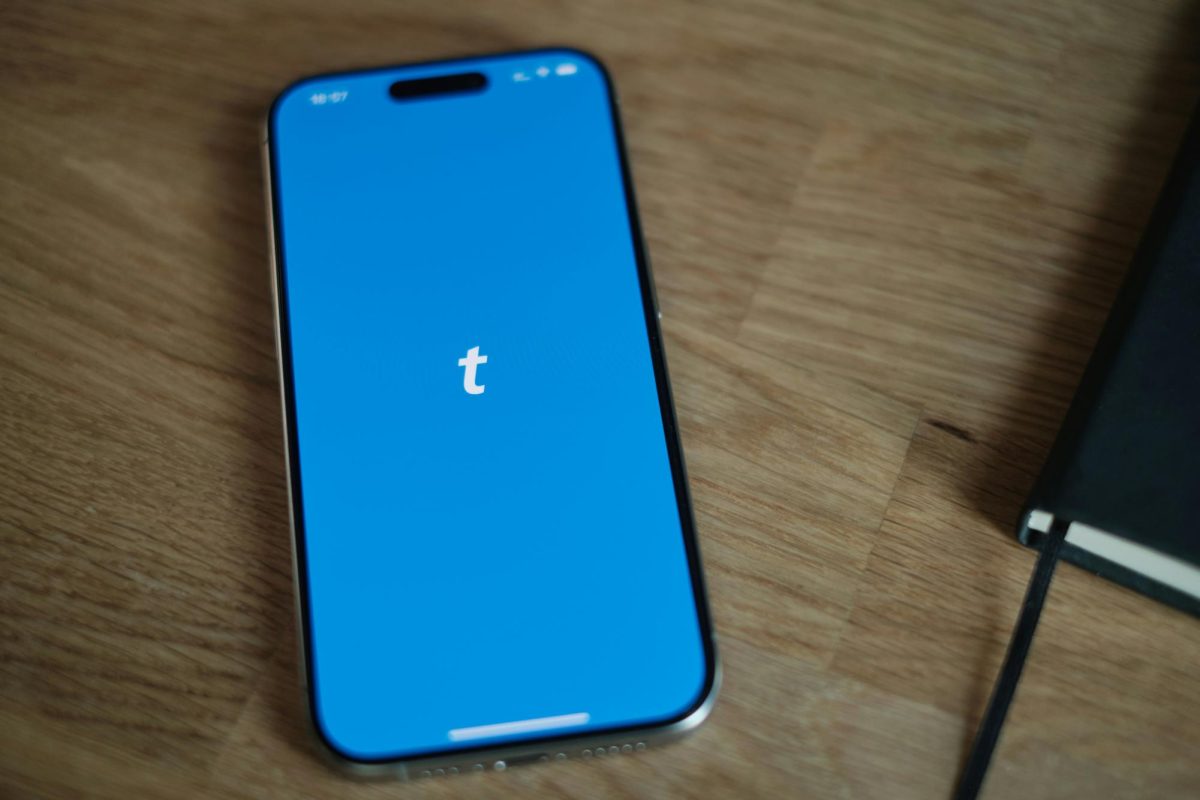Progressive or regressive?
CCHS seniors elect to use their phones rather than interact during lunch, knowing their phone-use is no longer prohibited.
October 8, 2019
As a Cathedral Catholic High School student, frantically hiding your phone whenever passing by faculty has been commonplace. However, as a result of instituting restorative discipline, the use of phones during breaks and passing periods is no longer prohibited.
“It used to be very punitive,” CCHS Dean of Students Mr. Michael Wallace said. “We would take your phone if you had it out and at the end of the day you would pick it up along with receiving a detention. But with restorative, we trust [the student] to use it appropriately, and there’s more conversation around it, making sure the phone is used correctly.”
CCHS administration and students consider the new phone policy as progressive, but with other schools moving to phone-free environments to promote interaction and limit distractions, the question is begged: How should phones be administered in school?
“If we are going to prepare our students for the real world,” Mr. Wallace said, “then [students] will have to learn how to still have human interaction and be able to function without constantly looking at their phone.
“So we are not preparing you by saying ‘no, you can never have that,’ cause you obviously will have that option [of using a phone] when you are older.”
San Mateo High School Assistant Principal Mr. Adam Gelb poses an alternative perspective, as SMHS is the largest public school in the country to go phone-free with approximately 1670 students.
“We found our teachers were spending too much time having conversations about phone use in class,” Mr. Gelb said. “These concerns about the level of engagement of students due to the phone use led us to think about solutions.”
SMHS does not simply punish phone use during the school day, rather the high school confiscates cell phones to start the day, sticking each phone into an individual magnetic pouch, which the students must return to at the end of the school day to reclaim their device.
“We ran a pilot program last year with 15 teachers, who nearly all said they liked the shift they saw in the classroom, with significantly more engagement,” Mr. Gelb said. “However, those teachers didn’t like being the ‘bad guy,’ and being one of the few teachers on campus to take away phones. They felt the policy should be enforced on a school-wide basis, or not at all.
“We decided to be comprehensive, and have a phone-free environment.”
CCHS similarly recognized phones as distractions during class despite disallowing usage in class. However, CCHS believes enabling students to access their device during break will discourage their magnetism to their phone during class time, according to Mr. Wallace.
SMHS, which previously allowed phones during breaks and lunch, has seen a culture shift since becoming phone-free. Hallways that were formerly lined with students’ heads tilted towards their screens have evolved into circles with students interacting and conversing, according to Mr. Gelb.
The pilot teachers, who enjoyed the transformation of a phone-free environment, had their opinion echoed by their SMHS teaching peers when instituted school-wide, as 96% of teachers favor the policy, according to an SMHS poll.
“Teachers have been ecstatic,” Mr. Gelb said. “The teachers feedback has been the most important, as they point to the classroom improvements. Although there has been mixed feedback from students, I have had some walk up to me and tell me how this policy has helped their grades and how they actually like the policy even though they initially were against it.”
Mr. Gelb is excited to receive grade data for the semester.
The restrictions within CCHS’s phone policy include a ban of any form of cell phone recording, and classroom-use necessitating teacher permission.
“In the past, the biggest issue with phones was the recording,” Mr. Wallace said. “Students were making fun of other students by recording dancing or fights and posting the videos. We obviously don’t want any of that, however, recording constraints could change as well as long as students can show they can control how they use their phones.”
Saint Augustine High School, a fellow Catholic San Diego school, executed a similar shift in policy to CCHS five years ago. Acknowledging phones as a distraction in class, but also a tool for learning, SAHS adjusted their policy to allow phones during breaks along with during class with instructor permission, according to SAHS Assistant Principal of Student Services Mr. John O’Beirne.
“I think that it is up to the students to regulate and educate themselves about the proper usage of their phones,” Mr. O’Beirne said. “The reason it is becoming an issue is people are not self-regulating themselves. Students and parents know what is appropriate.”
The phone policy debate is truly a value debate, as those who prohibit usage believe in limiting distractions to promote interaction, while those who allow usage believe in constructing a trustful environment emphasizing responsible behavior.
Although the jury is still out regarding CCHS’s policy, early observations promote optimism.
“It’s kind of funny, I will just be walking around and everyone by habit is just slamming their phones in their pocket,” Mr. Wallace said. “But [the phone policy] has been positive. It allows [faculty] the freedom to interact with students in a better way rather than just beating down on them and commanding them to do certain things.”






















































